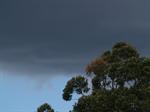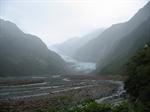
Study climate science
Learn about atmospheric conditions, which are generally caused by factors such as temperature, wind, air pressure and water vapour at any specific time.
A course for:
- Land managers
- Farmers and Horticulturists
- Environmental managers
- Politicians
- Students of science, or anyone else with an interest or concern forclimate
The atmosphere is made up of a mixture of moisture, temperature and gases which, in one way or another, control the conditions that are vital for the occurrence of life on earth. These conditions are always somewhat active, and are subject to change at every moment in time. The variations in the atmosphere along with the earth’s energy dynamics play a major role on what influences an everyday environmental behaviour. This, along with the movement of the earth and the suns radiation, produces continuous and aggregate conditions of climate and weather phenomena that affect, positively or negatively, life on earth.
Lesson Structure
There are 8 lessons in this course:
-
Nature and Scope of Climatology
-
Introduction to climatology & meteorology
-
Understanding how climate and weather affects us
-
What makes up our weather?
-
How do we measure weather?
-
Weather Science Foundations
-
Solar Radiation
-
Temperature
-
Precipitation
-
Deposition
-
Humidity
-
Clouds
-
Circulation Patterns
-
Pressure Systems
-
Atmospheric Pressure
-
Pressure and Temperature
-
Latitudinal Circulation
-
Air masses
-
Wind
-
Trade Wind
-
The Beaufort Scale of Wind Speed
-
Frontal Systems
-
Oceanic circulation
-
Longitudinal Circulation
-
Southern Oscillation
-
Ocean Gyres
-
Climate Classifications & Patterns
-
Types of Climates
-
Arid/Desert
-
Subtropical
-
Tropical
-
Temperate
-
Mediterranean
-
Coastal
-
Factors Which Influence Climate
-
Latitude
-
Wind Direction
-
Topography
-
Altitude
-
Aspect
-
Geographical Location
-
Climates Classification Models
-
Koppen Climate Classification
-
Thornthwaite Climatic Classification System
-
Bergeron Climatic Classification System
-
Spatial Synoptic Classification (SSC)
-
Other Global Classification Systems
-
Holdridge Life Zone System
-
Atmospheric Dynamics
-
Introduction to Atmosphere Composition
-
Purpose of the Atmosphere
-
Seasonal Variations
-
Vertical Structure of Atmosphere
-
Precipitation
-
Precipitation Processes and Other Events
-
Cloud Dynamics
-
Storms
-
Thunderstorms
-
Cyclones, Typhoons and Hurricanes
-
Tornadoes
-
METAR Codes for Precipitation Processes
-
Aerosols and Climate Processes
-
Indirect Effects of Aerosols
-
Climate Changes
-
Factors that Cause or Influence Climate Change
-
Natural Causes
-
The Sun
-
Earth's Orbit
-
Earth's Axis
-
Oceanic Circulation
-
Oceanic Carbon Dioxide
-
Magnetic Field
-
Plate Tectonics
-
Volcanic Activities
-
Asteroids, Comets or Meteorite Impact
-
Manmade Causes or Anthropogenic Influences
-
Fossil Fuels
-
Agriculture
-
Deforestation
-
Nitrous Oxide
-
Other Pollution
-
Different Types of Climate Change Events
-
Glaciation and Ice Loss
-
Flora and Fauna
-
Ocean Warming and Sea Levels
-
Permafrost
-
Extreme Weather Events
-
Ozone Depletion
-
Global Warming and the Greenhouse Effect
-
Applications of Climate Science
-
Evolution of Methods and Techniques of Weather Forecasting
-
Early Methods & Simple Techniques
-
Modern Forecasting Approaches
-
Synoptic (Traditional) Forecasting
-
Numerical Weather Prediction (NWP)
-
Statistical Methods
-
Long and Short Range Forecasting
-
Understanding Forecasting Models
-
Simple Models
-
Tropical Cyclone Forecast Model
-
General Circulation MOdel (GCM)
-
Regional Climate Modelling
-
Collection and Applications of Weather & Climate Data
-
Weather Mapping
-
Satellite
-
Radar
-
Tropical Rainfall Measuring Mission (TRMM)
-
Verification Methods
-
Methods of Standard Verification
-
Climatology Problem Based Learning Project
-
Management Processes
-
Planning
-
Organising
-
Leading
-
Controlling
-
Business Plans - Preparing a Plan
-
Decision Making
-
What to Plan for
-
Risk
-
Risk Analysis
-
Ways to Manage Risk
-
PROJECT PLAN
Why Does the Weather Keep Changing?
Weather is complex, and many different factors interact with each other to create the weather conditions that we experience. This course helps you to understand the nature and scope of those faqctors, and the interplay that goes on between them.
The circulation of pressure and wind around the earth is one such factor. It is responsible for heat distribution and the formation of ocean currents. Since there is uneven heating of the earth’s surface at different latitudes due to different distances from the sun, this causes air to circulate. Warm air is transferred from low latitudes to high latitudes and, conversely, cool air is transferred from high latitudes to low latitudes.
Pressure Systems
Atmospheric Pressure

Atmospheric pressure, also known as ‘air pressure’ can basically be defined as ‘the exertion of force by the weight of the atmospheric air that is above a particular place or surface’. The atmospheric air contains gases that are pulled down to the earth by the effect of ‘gravity’. The weight of the air will produce variations in air pressure depending on its altitude in relation to the surface of the earth. The pressure will decrease with altitude and increase as it gets closer to sea level (i.e. the air pressure is lower, cooler and less dense at the top of a mountain than at the ocean).
As a general rule, the standard atmospheric pressure drops 1 millibar for every 8 metres of altitude. At sea level, the standard atmospheric pressure equals approximately 1013mb or 1 atmosphere or 1 bar. At the top of Mount Everest (the highest mountain on earth above sea level - approximately 8,850m high, or 28,000 feet), the standard air pressure averages 300mb, while at altitudes over 50,000m (e.g. mesosphere) the pressure is practically zero.
Air pressure is measured by ‘barometers’, which has also given this term the name of barometric pressure.
Pressure and Temperature
Air pressure depends on the weather conditions; it changes with altitude as well as with the rise and fall of temperature. Hot air is less dense and will tend to rise and remain above cooler air (this is because as the air molecules warm up, they tend to move further apart from each other). The less the molecules of air are compressed, the lower the pressure.
An area of low pressure occurs when the air pressure is lower with respect to its surroundings. This results in water vapour in the air, which compresses and forms clouds (i.e. condensation) and, often, rain. Conversely, when the air pressure is higher with respect to its surroundings, the descending air is warmed by compression, causing cloud water to vaporise (i.e. no condensation), creating what many people associate with clear skies or ‘fine weather’.
The air moves due to differences between atmospheric pressure and temperature. Pressure differences are caused by the earth trying to maintain balance, therefore, heat (solar radiation) will influence greatly on the generation of pressure differences as it will create continuous movements of cool and warm air.
Air pressure varies from time to time and place to place. Different points of pressure are generally shown by contour lines drawn on weather maps, indicating points of equal air pressure, referred to as isobars, which are often valued in ‘millibars’ (mb). Pressure systems are shown by isobars indicating high and low pressure zones. On weather maps, high and low pressure systems are generally indicated by the letter ‘H’ and ‘L’, respectively.
Winds are produced by the circulation of air from high pressure lower pressure. The direction and speed of the wind are also represented by isobars. The direction is normally shown by arrows circulating among the pressure cells, and the strength of the wind will be shown by the distance between the isobar lines (i.e. pressure gradient or isobar spacing). This way we can say that the closer the isobars are from each other, the stronger the winds (strong pressure gradient) and vice versa.
 High pressure zones are areas where the air pressure is higher with respect to its surroundings, therefore, the inner contour lines of the isobars will have higher numbers indicating higher pressure, that decrease as the isobar lines are further away. A feature related to high pressure zones is an elongated area among the isobars referred to as a ‘ridge’, along which the pressure gradually increases or decreases. High pressure systems are also referred to as anticyclones. The air circulates clockwise around a high pressure zone in the northern hemisphere and anticlockwise in the southern hemisphere.
High pressure zones are areas where the air pressure is higher with respect to its surroundings, therefore, the inner contour lines of the isobars will have higher numbers indicating higher pressure, that decrease as the isobar lines are further away. A feature related to high pressure zones is an elongated area among the isobars referred to as a ‘ridge’, along which the pressure gradually increases or decreases. High pressure systems are also referred to as anticyclones. The air circulates clockwise around a high pressure zone in the northern hemisphere and anticlockwise in the southern hemisphere. - Low pressure zones occur when the air pressure is lower than its surroundings. Here, the inner isobars are indicated by low numbers and increase as the isobars are further away. A feature related to low pressure zones is an elongated area among the isobars referred to as a ‘trough’, along which the pressure gradually increases or decreases. Low pressure systems are also referred to as a “depression” or cyclone. Around a low pressure zone the air circulates anticlockwise in the northern hemisphere and clockwise in the southern hemisphere.
Any Questions?
If you are not sure if this is the course for you, then why not ask one of our tutors for their advice?
